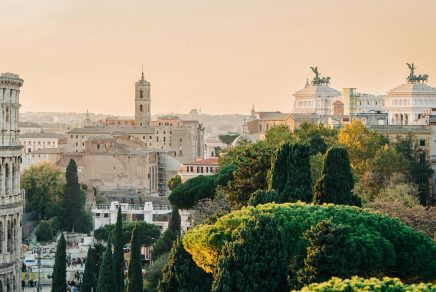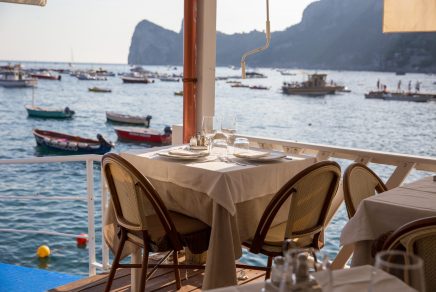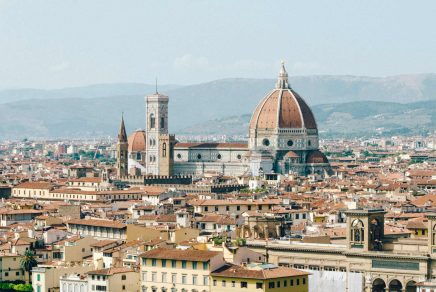Share the article
Rome is one of the world’s most significant historical cities, drawing millions of tourists each year to its renowned sites. If you want to explore the historical landmarks in Rome, it’s nearly impossible to avoid the crowds while discovering Italy’s past. With that in mind, we’ve put together a list of essential historical monuments in Rome. From the most popular, can’t-miss locations to a few hidden gems, this guide has you covered.
A couple of quick tips before you dive in:
- To truly appreciate the historical landmarks in Rome, consider taking a guided tour. Most of the locations on this list offer guides who speak English, French, or almost any major language.
- If a guide isn’t your thing, no worries. Download an offline version of the Wikipedia page for the landmark you’re visiting and read along as you explore.
Roman Forum
The Forum was many things to Ancient Rome. It’s filled with temples and monuments from way back in the 6th century BC, the time of Rome’s first kings. It was the city’s marketplace and civic center. Archeologists are still digging up the Forum’s history to this day. At the Roman Forum, make sure to visit the Temples of Caesar and Vesta, the Via Sacra and the Arch of Titus.
Vatican City
The Vatican is the seat of Roman Catholicism. It is a city within a city, as well as the smallest recognized state in the world. Any art and architecture buff will make sure to go to the Sistine Chapel, the Vatican Museum and St. Peter’s Basilica. The faithful can come and be blessed by Pope Francis I on Wednesdays (make sure you book the free tickets) and Sundays.
Coliseum
The Coliseum is the quintessential symbol of the Roman Empire. We know it: it’s on every postcard! It’s a very large amphitheatre built for the sole purpose of entertaining Roman citizens with brutal fights and games. This is where gladiators, slaves who had been captured and trained to fight to the death, showed their skills against both people and wild animals. Today the Coliseum is partially in ruins. And it hosts four million visitors each year.
Vatican Museums
The Vatican City has one of the largest and best art collections in the whole world. Different popes amassed these legendary paintings and sculptures over many centuries. There are more than 7 kilometers of such diverse exhibits from ancient to modern times. Perhaps the most famous part of the Vatican Museums is the Sistine Chapel. Upon entering, your eyes immediately fly upward to look at its magnificent ceiling in awe.
The Pantheon
The Pantheon dates back from 125 AD, and is one of Rome’s most magnificent attractions. Its concrete structure was the biggest the world had known until modern times. The centerpiece of the Pantheon is its spectacular dome, which Michelangelo studied before designing St Peter’s Basilica. Entry is free, and make sure you don’t miss the tomb of the artist Raphael and others, set within the walls of the Pantheon.
The Palatine Hill
Rome is the “City on Seven Hills”, and right in the middle is the most famous one, the Palatine Hill. This is also one of the oldest places in the city. Known to the locals as the Palatino, you’ll see amazing views as you walk among very tall pine trees and ancient ruins. The Palatine Hill is located between the Circo Massimo and the Roman Forum.
Trevi Fountain
First-time visitors to Rome often visit the Trevi Fountain, the most well known fountain in the city. It’s actually part of an aqueduct built in 19 BC to supply water to Rome. Today, the fountain is set in a natural amphitheatre. It’s a good place to visit on a summer evening, right in the middle of Rome. You’ll be walking down the busy city streets and suddenly the fountain is right there.
Villa Borghese
When you need a break from the busy city, you can visit the Villa Borghese, a large park at the edge of the city. This beautiful park has museums, a lake, fountains, and other delightful attractions.
The Museo e Galleria Borghese has paintings and sculptures by such noted artists as Rubens, Titian, Raphael and Bernini, including the famous ‘Abduction of Proserpina by Pluto’. Note that you’ll need to buy your tickets ahead of time to visit this monument to art history, one of the most important on this planet.
Spanish Steps of the Piazza di Spagna
Visiting fashionistas love to visit the Spanish Steps. Around them, one can find plenty of designer boutiques (and the ubiquitous luxury brands). To get there, climb a set of narrow steps near the Piazza di Spagna and the church of the Trinita dei Monti. The Spanish Steps can be found at the very end of the eastern part of Rome’s old city center. Oh, and if you feel like luxury dining and you’re in the neighborhood, check out Imago restaurant. It’s tops.
Piazza Navona
A worthwhile place to relax is Piazza Navona. This beautiful piazza was once the location of the Stadium of Domitian. It is also where you’ll find a magnificent fountain sculpted by Bernini, la Fontana dei Fiumi. This fountain has been at Piazza Navona since 1651. There is also a famous Baroque church there, Sant’Agnese in Agone.
The Capitoline Museum & The Capitoline Hill
The Capitol is the historical seat of the government in Rome, and its design today hails from the 16th century. Michelangelo designed the Piazza de Campidoglio at the top of the Capitoline Hill, and in order to get there, visitors climb the Cordonata stairs. At the Piazza del Campidoglio you’ll find the Capitoline Museum as well. This museum, founded in 1471, is one of the oldest national museums in the world. It also has a rooftop restaurant with spectacular views of the city.
Basilica Di San Giovanni in Laterana
This is one of the most important churches in Rome. Although the Pope’s official residence is at the Vatican, the Basilica di San Giovanni Laterano houses the pope’s throne, and is the seat of the Bishop of Rome. Built by Emperor Constantine in the 4th century, this Basilica is where popes lived for about one thousand years, until the Vatican became the residence of the popes. Six popes are buried in this Basilica, and it houses a cedar table that is purportedly the one used by Jesus Christ at the Last Supper.
The Baths of Caracalla
These baths had a twofold purpose: for cleansing, and for networking and socializing. There were three huge rooms for bathing, one with a cold pool, one with a lukewarm pool and the last one with a hot pool. As many as 1,600 people could use the baths at the same time.
The Forum Boarium
On the edge of the Tiber, between the Palatine Hill and the Capitol, one can find the Forum Boarium, the very first Roman forum. And before being a forum, it was used as a cattle market. It was built all the way back in the 7th Century before Jesus-Christ, all the way back when the city was first founded. The first gladiators fought there before the show was moved to the Coliseum. There are two Roman temples, one dedicated to Hercules Victor, the other one to Portunus, which were later converted to Catholic churches.
Largo di Torre Argentina
The Largo di Torre Argentina is located near the Campo Marzio. It’s host to a famous archeological site called Area Sacra since the ruins of four major temples were found there. There also are the remains of the Theatre of Pompey, where Julius Caesar was assassinated. Today, this place has a playful dedication, since it’s host to about 400 stray cats!
Sant’Ignazio Church
Located on the Sant’Ignazio piazza, the church was built in the 17th Century by the famous artist, mathematician and astronomer Orazio Grassi. On the ceiling, there’s a wonderful fresco creates an optical illusion. Stand in the centre of the nave and look up to the vault. The illusion is complete: you’ll think you’re looking at a perfect blue sky, full of angels and saints.







